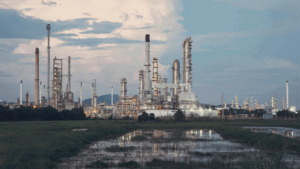If you’ve been keeping an eye on the energy markets, you’ve probably noticed something interesting: natural gas is getting a lot more attention. For those of us with mineral, royalty, or working interests—especially in the U.S.—this shift is more than just a headline. It has real implications for how our assets are valued and what the next few years might look like for energy investors.
So what’s really going on with natural gas versus oil? And what does it mean for your holdings?
Let’s dig in.
Natural Gas Demand Is Climbing—and Fast
While oil still makes up a major chunk of global energy use, natural gas has been steadily gaining ground. In fact, U.S. liquefied natural gas (LNG) exports have surged, turning the Gulf Coast into a global energy hub almost overnight.
Why the momentum?
-
LNG Exports: Global demand—especially from Europe and Asia—continues to grow. U.S. producers are well-positioned to meet it.
-
Power Generation: Natural gas has become the fuel of choice for replacing coal. It’s cleaner, reliable, and abundant.
-
Industrial Use: Manufacturers, chemical producers, and refineries depend heavily on gas for both energy and feedstock.
All of this points to a longer-term trend: gas is no longer just a secondary player. It’s becoming a core pillar of the global energy mix.
Oil Still Reigns—But Faces Long-Term Pressure
Oil isn’t going away anytime soon. It still dominates the transportation sector, supports global trade, and remains a key input for petrochemicals. That said, there are headwinds:
-
EV adoption is picking up pace.
-
Net-zero goals are being taken seriously, even by traditionally conservative markets.
-
Investor sentiment is shifting—capital is moving toward cleaner, lower-carbon fuels.
That’s not to say oil is a bad investment. Quite the opposite in many cases—especially in high-producing basins. But it does mean the long-term outlook is being modeled more conservatively.
What This Means for Your Asset’s Value
If you’re holding oil and gas interests, the commodity mix (how much is oil vs. gas) plays a big role in how buyers, brokers, and advisors value your asset.
A few key takeaways:
-
Gas-Rich Areas Are Gaining Appeal: Places like the Haynesville or Marcellus, with pipeline access and proximity to LNG terminals, are seeing rising interest.
-
Volatility Is a Factor: Oil markets are notoriously reactive to geopolitical events. Natural gas, while not immune, is showing stronger demand fundamentals.
-
Long-Term Cash Flow Models Are Shifting: More buyers are weighting gas-heavy assets with strong PDPs (proved developed producing wells) more favorably—especially if infrastructure is in place.
Why This Matters Now
In energy, timing is everything. With demand for U.S. natural gas showing no signs of slowing, those holding gas-weighted assets could be in a strong position to sell, lease, or restructure their portfolios. On the flip side, oil-rich holdings may still command high valuations, but windows of opportunity may narrow over time depending on macro trends.
How Eagle River Advisors Can Help
We’ve had the opportunity to work closely with mineral and royalty owners across the U.S., and one thing we’ve learned: every asset has a story—and a strategy.
At Eagle River Advisors, we help our clients evaluate that story. Whether it’s reviewing current market value, identifying upside potential, or exploring exit strategies, we bring data-driven insight to the table.
We’re not just watching the market—we’re actively helping clients make decisions in it.
Whether your portfolio leans gas, oil, or a mix of both, understanding where demand is headed—and how the market values those trends—is essential.
If you’re thinking about optimizing your assets, selling, or simply want to know what your interests are worth in today’s environment, we’d love to talk.
Because in a changing market, clarity is power—and the right partner makes all the difference.




